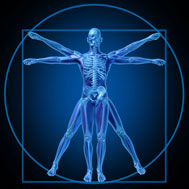 The new Introduction to the Human Body 10th Edition by Wiley publishing was released in December 15, 2014. Authors Gerard J. Tortora and Bryan H. Derrikson have built upon this solid brand adding more sections on disease, cryolipolysis and completing revamping the “Chapter 15 Heart Illustrations.” Buyers can choose between an Instructors or Students version.
The new Introduction to the Human Body 10th Edition by Wiley publishing was released in December 15, 2014. Authors Gerard J. Tortora and Bryan H. Derrikson have built upon this solid brand adding more sections on disease, cryolipolysis and completing revamping the “Chapter 15 Heart Illustrations.” Buyers can choose between an Instructors or Students version.
Introduction to the Human Body 10th Edition has 640 pages, along with 24 chapters, answers, glossary, credits and index. The chapters include “Organization of the Human Body,” “Cells,” “Tissues,” “Joints,” “The Muscular System” to name a few. Each chapter combines illustrations, text and short quizzes to test knowledge retention.
For example, the “Chapter 2: Introductory Chemistry” includes a number of helpful text illustrations and tables to improve comprehension. Students can answer an “Animation Worksheet” to show their knowledge. Students also can answer the “Real Anatomy Worksheet” to demonstrate their knowledge.
“Chapter 2” also has a “PowerPhys Lab Report” for a more real-life testing format. Each chapter also has study objectives, lecture outlines and teaching tips for instructors. Students are even offered study strategies based on learning styles.
Homeostatic Imbalances Clinical Case Studies and Pre-Created Assignments allow adjunct instructors to get up to speed rapidly. This textbook series can be used by a wide range of teachers from beginner to advanced.
The Wiley publishers (previously known as John Wiley & Sons) made a book that was ideal for a one-semester course giving pre-medical students a glimpse into the physiology and anatomy fields. This well-written book provides narratives to help the students better understand the subject. Numerous illustrations give students a visual reference point for identifying each body part.
This latest edition of the Introduction to the Human Body has updated several of its sections adding more information on disease, cryolipolysis, epiphyseal plate and control of breathing. There are better illustrations, art and photographs. Anatomical terminology and “Clinical Connections” have been updated throughout the book. In fact, the Chapter 15 “Heart Illustrations” are all brand new.
The Wiley Publisher even has special online resources for the Introduction to the Human Body 10th Edition. Instructors, teachers and professors can find additional body images, PowerPoint presentations and pre-built assignments at the WileyPLUS website. Instructors can “Browse by Chapter” or “Browse by Resource.” This allows teachers to gain a deeper understanding of the book.
Students also have their own Introduction to the Human Body 10th Edition Tortora online resources. The can view 2D or 3D animations to help them better understand body parts. These visual aids include cadaver photographs, histological micrographs and anatomical models. Students can also view helpful videos online at the WileyPLUS website.
If an individual is contemplating becoming a nurse or doctor, then learning as much as possible about the medical field is essential. The Introduction to the Human Body 10th Edition continues to expand, improve and advance its features. With online resources available, students can expand their physiology and anatomy knowledge faster than ever before.